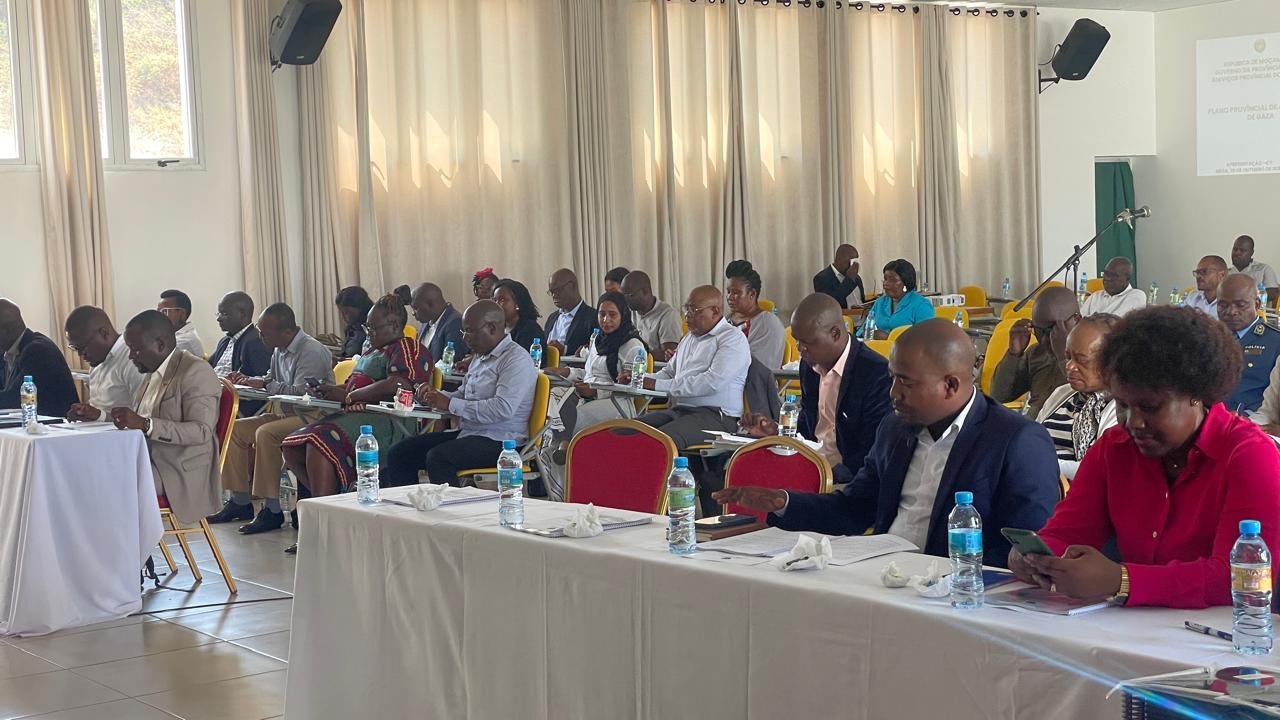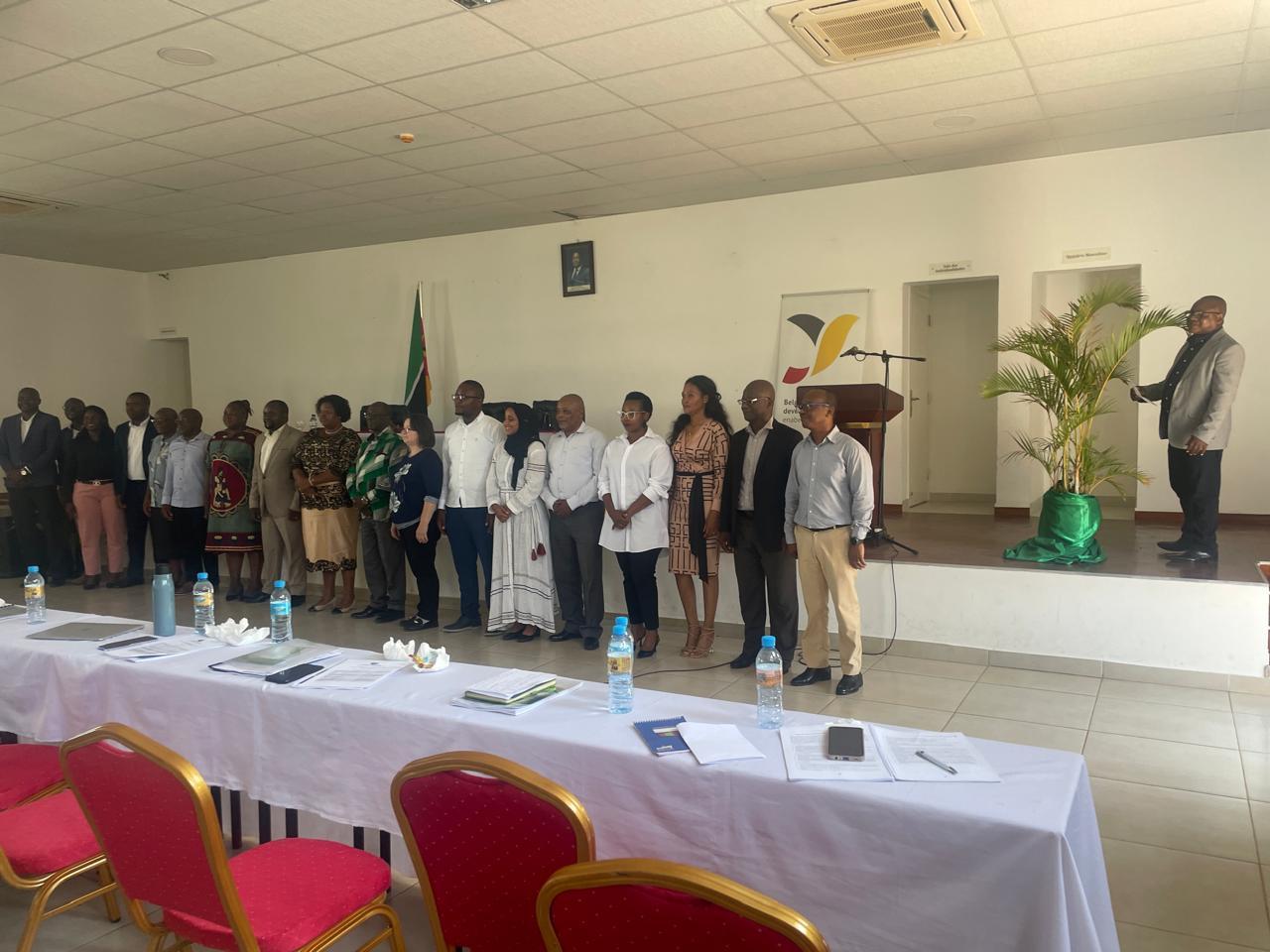Climate Planning in Gaza: a Model to the Future
Imagine a dam. It is installed near the source of a river in district 'A'.
The river runs through two more districts - let's call them districts 'B' and 'C'.
This dam, which holds back the fury of the waters in times of flood, is damaged and the flood spreads to the underlying districts.
Administratively, this situation is the sole responsibility of district 'A', where the infrastructure is located. But climate change does not recognise the concept of jurisdiction.
This is the scenario that Dr. Calisto Microsse, from the Adaptation Department of the Ministry of Agriculture, Environment and Fisheries, uses to illustrate the need to draw up Provincial Plans of Adaptation (PPA). Local adaptation plans already exist in many districts, however, not sufficient to deal with the impacts of climate change that cross administrative boundaries.
But what is an Adaptation Plan? Generally speaking, it is a long-term integrated strategy aimed at preparing for and mitigating the effects of climate change. It proposes practical actions to mobilise resources to protect the environment and make communities more resilient.
Collaboration: beginning, in-between and beyond...
In line with the National Strategy for Adaptation and Mitigation of Climate Change 2013-2025, the current Mozambique-Belgium bilateral cooperation portfolio sets climate resilience as a priority. Enabel engaged in a collaboration with the government to turn this gap into an opportunity to strengthen adaptation at provincial level, trying to hone a replicable model that goes beyond local plans, unifying efforts at provincial level. And so began the journey of drawing up Gaza's PPA, the second in the country, after Zambezia's.The methodology was refined on the basis of Zambezia's experience. The existing script was enriched, ensuring more effective alignment between the different scales of intervention and better integration of provincial specificities. The fundamental principles of this approach include adding value and complementarity, respecting the principle of subsidiarity (dealing only with issues that cannot be resolved at district level), improving the business environment and targeting investments.
Based on these lessons, a model was designed that would be tested in the districts of Bilene on the coast, and Guijá in the middle and Mapai in the interior of Gaza province, southern Mozambique.
The core team describes the process as highly collaborative, not only between the government, Enabel, Eduardo Mondlane University (UEM) and the communities, but also with the involvement of various non-governmental organisations working in the selected areas, academia and the private sector.
Coordination was centralised at the level of the Gaza provincial government, which ensured structured and effective implementation. The mobilisation of a specialised consultancy from UEM made it possible to reinforce the provincial technical team, ensuring the application of a scientifically informed approach adapted to local realities.
The academic consultant, Professor Jânio Dambo, says that the contribution of the local authorities was fundamental and crucial to the quality of the PPA, since they have essential information about the impacts of climate change on their territory.
With the training and engagement of the provincial technical team through technicians from the provincial directorates and services for the environment, agriculture, public works, finance, fisheries, gender and social protection, meteorology and disaster risk management, the process of collecting and analysing data became more robust. The needs became clear and the adaptation plan took shape.
The Plan, Outlook and Expectations
This Provincial Adaptation Plan presents a facilitative and integrative approach to strengthening local ones, ensuring greater coordination, capacity building, and funding for climate actions within districts and for initiatives that go beyond district boundaries.The plan outlines monitoring, training, and resource mobilization activities, leaving direct investments to the district plans, in accordance with the principle of subsidiarity. In this way, the PPA serves as a supporting instrument, fostering an enabling environment for the effective implementation of adaptation measures at the local level.
In a large room in the provincial capital, Xai-Xai, the Plan was presented to the Provincial Advisory Council, with the presence of local authorities, including the Secretary of State and the Governor of the Province. It was unanimously approved, reinforcing the province’s commitment to supporting districts in implementing resilient adaptation measures.
As implementation begins, it is expected that local plans will be strengthened by providing the necessary tools and resources to thrive in the face of climate challenges. Professor Dambo explains that the success of this implementation “can turn the province into a model of climate resilience, ensuring food, water, and environmental security for the population.”
By integrating strategic planning, technical resources, and community participation, the Gaza PPA sets a replicable path to reducing vulnerabilities and ensuring the sustainable development of other provinces.
Latest news from this project
No news



